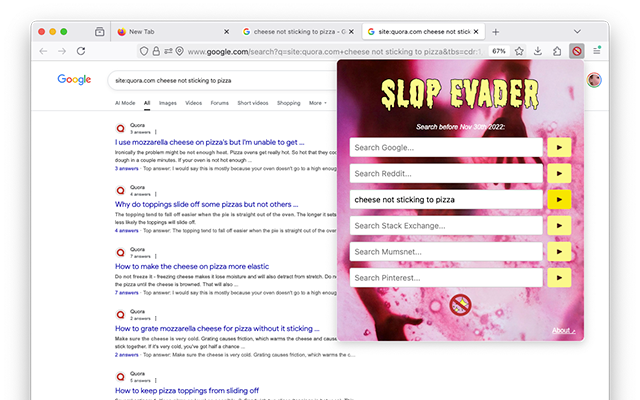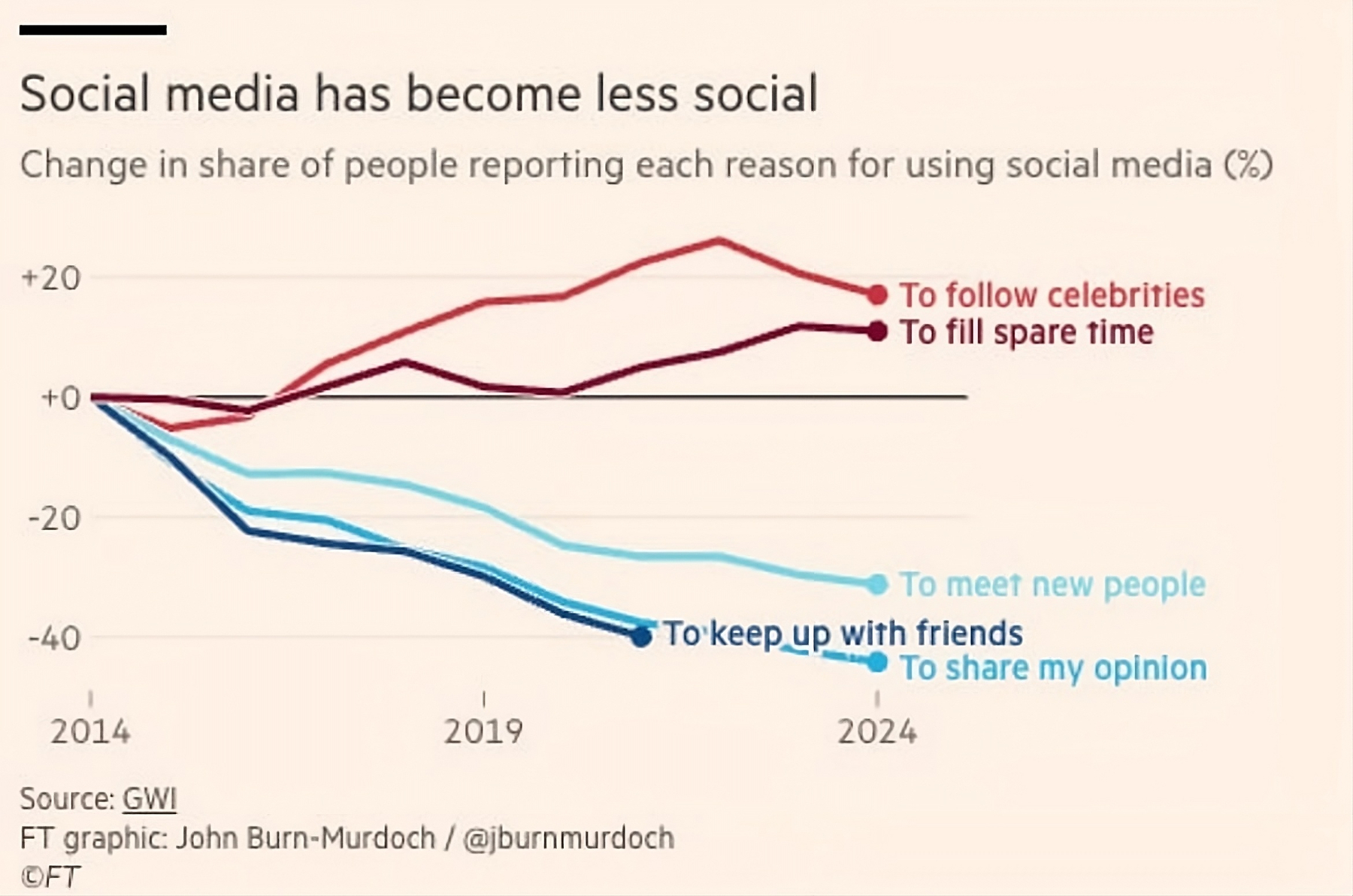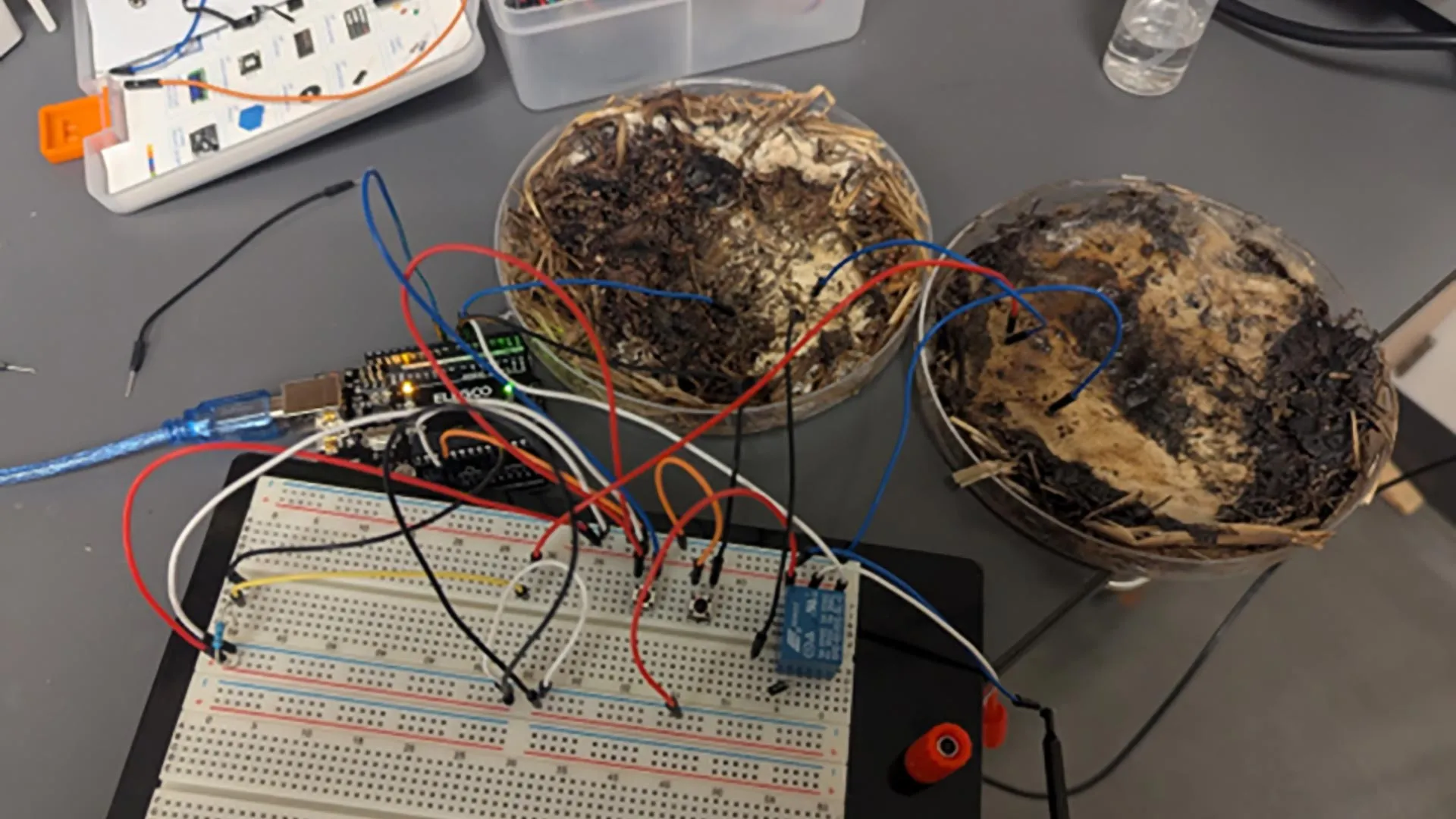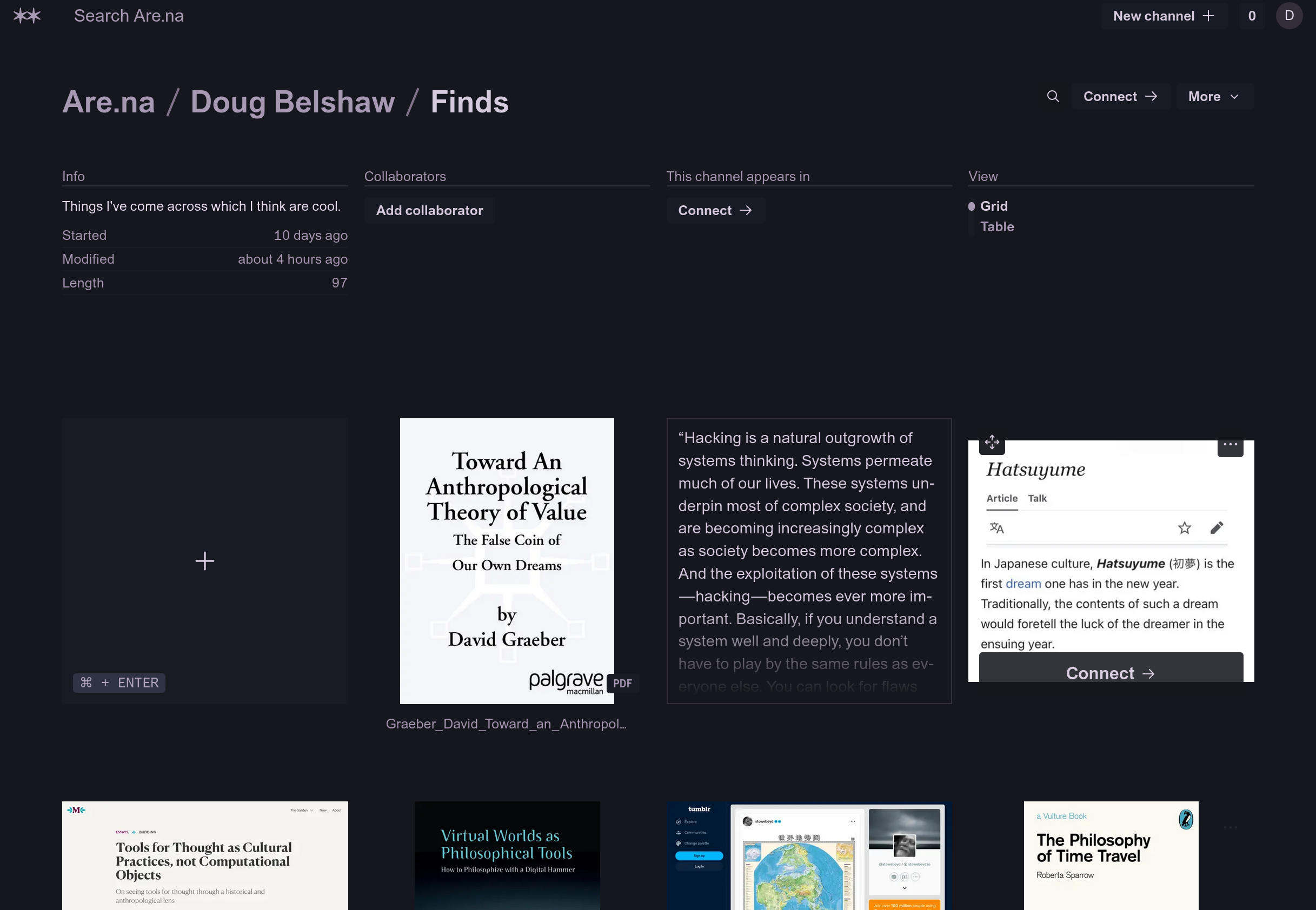Monocultures are perilous not just in agriculture, but in software distribution as well.

Most people get their Android apps from the Google Play Store. It’s not the only way of doing so, however, and there are some apps I get from F-Droid, a free and open source app repository. There are a number of advantages, not least that it lists the ‘antifeatures’ of apps — which usually include things like tracking.
Recently, Google announced that Android developers will, for ‘security reasons’, be required to register with Google, which includes payment of a fee and uploading personally identifying documents. For an organisation that vaunted the ‘open’ nature of the Android ecosystem this seems like a worrying step.
This post outlines what’s at stake. First of all you own your smartphone which means you should be able to install any apps you want on it. To argue otherwise is to argue from a paternalist and potentially dictatorial point of view. You can talk about ‘privacy’ and ‘safety’ all you like, but we should always have the freedom to do what we like with our own stuff unless in doing so we’re harming other people.
For more on this see a history of how we got from ‘running anything you want on your own machine’ to the current crop of walled gardens in this post on Hackaday.
You, the consumer, purchased your Android device believing in Google’s promise that it was an open computing platform and that you could run whatever software you choose on it. Instead, starting next year, they will be non-consensually pushing an update to your operating system that irrevocably blocks this right and leaves you at the mercy of their judgement over what software you are permitted to trust.
You, the creator, can no longer develop an app and share it directly with your friends, family, and community without first seeking Google’s approval. The promise of Android — and a marketing advantage it has used to distinguish itself against the iPhone — has always been that it is “open”. But Google clearly feels that they have enough of a lock on the Android ecosystem, along with sufficient regulatory capture, that they can now jettison this principle with prejudice and impunity.
You, the state, are ceding the rights of your citizens and your own digital sovereignty to a company with a track record of complying with the extrajudicial demands of authoritarian regimes to remove perfectly legal apps that they happen to dislike. The software that is critical to the running of your businesses and governments will be at the mercy of the opaque whims of a distant and unaccountable corporation. Monocultures are perilous not just in agriculture, but in software distribution as well.
Source: F-Droid blog
Image: Andrey Matveev
The geopolitics of the post-oil age is going to be interestingly different.

I’ve excerpted this post by Charlie Stross as best I can to extract the main argument, but it’s best to read the whole thing for yourself. Essentially, the reason everything is kicking off everywhere is because we’ve got an asset-stripping class who have a vested interest in maintaining the fossil-fuel status quo. But all of the momentum is with renewables, so there is huge amount of disruption on every front.
That means that, as Stross argues persuasively, 2025 is a pivotal year. I’m crossing my fingers and toes that 2026 shows us tracking in a positive direction.
Notwithstanding the world being on fire, an ongoing global pandemic vascular disease that is being systematically ignored by governments, Nazis popping out of the woodwork everywhere, actual no-shit fractional trillionaires trying to colonize space in order to secede from the rest of the human species, an ongoing European war that keeps threatening to drag NATO into conflict with the rotting zombie core of the former USSR, and an impending bubble collapse that’s going to make 2000 and 2008 look like storms in a teacup …
I’m calling this the pivotal year of our times, just as 1968 was the pivotal year of the post-1945 system, for a number of reasons.
It’s pretty clear now that a lot of the unrest we’re seeing—and the insecurity-induced radicalization—is due to an unprecedented civilizational energy transition that looks to be more or less irreversible at this point.
[…]
China is currently embarked on a dash for solar power which really demands the adjective “science-fictional”, having installed 198GW of cells between January and May, with 93GW coming online in May alone: China set goals for reaching net-zero carbon emissions by 2030 in 2019 and met their 2030 goal in 2024, so fast is their transition going. They’ve also acquired a near-monopoly on the export of PV panels because this roll-out is happening on the back of massive thin-film manufacturing capacity.
The EU also hit a landmark in 2025, with more than 50% of its electricity coming from renewables by late summer. It was going to happen sooner or later, but Russia’s attack on Ukraine in 2022 sped everything up… Nobody west of Ukraine wanted to be vulnerable to energy price warfare as a prelude to actual fighting, and PV cells are now so cheap that it’s cheaper to install them than it is to continue mining coal to feed into existing coal-fired power stations.
This has not gone unnoticed by the fossil fuel industry, which is collectively shitting itself. After a couple of centuries of prospecting we know pretty much where all the oil, coal, and gas reserves are buried in the ground… The constant propaganda and astroturfed campaigns advocating against belief in climate change must be viewed in this light: by 2040 at the latest, those coal, gas, and oil land rights must be regarded as stranded assets that can’t be monetized, and the land rights probably have a book value measured in trillions of dollars.
[…]
So we’re going through an energy transition period unlike anything since the 1830s or 1920s and it’s having some non-obvious but very important political consequences, from bribery and corruption all the way up to open warfare.
The geopolitics of the post-oil age is going to be interestingly different.
[…]
The existing wealthy elites (who have only grown increasingly wealthy over the past half century) derive their status and lifestyle from the perpetuation of the pre-existing system. But as economist Herbert Stein observed (of an economic process) in 1985, “if it can’t go on forever it will stop”. The fossil fuel energy economy is stopping right now—we’ve probably already passed peak oil and probably peak carbon: the trend is now inexorably downwards, either voluntarily into a net-zero/renewables future, or involuntarily into catastrophe. And the involuntary option is easier for the incumbents to deal with, both in terms of workload (do nothing, right up until we hit the buffers) and emotionally (it requires no sacrifice of comfort, of status, or of relative position). Clever oligarchs would have gotten ahead of the curve and invested heavily in renewables but the evidence of our eyes (and the supremacy of Chinese PV manufacturers in the global market) says that they’re not that smart.
[…]
Business logic has no room for the broader goals of maintaining a sustainable biosphere, or even a sustainable economy. And so the agents of business-as-usual, or Crapitalism as I call it, are at best trapped in an Abilene paradox in which they assume everyone else around them wants to keep the current system going, or they actually are as disconnected from reality as Peter Thiel (who apparently believes Greta Thunberg is the AntiChrist.)
if it can’t go on forever it will stop
What we’re seeing right now is the fossil fuel energy economy stopping. We need it to stop; if it doesn’t stop, we’re all going to starve to death within a generation or so. It’s already leading to resource wars, famines, political upheaval, and insecurity (and when people feel insecure, they rally to demagogues who promise them easy fixes: hence the outbreaks of fascism). The ultra-rich don’t want it to stop because they can’t conceive of a future in which it stops and they retain their supremacy.
[…]
If we can just get through the rest of this decade without widespread agricultural collapses, a nuclear war, a global fascist international dictatorship taking hold, and a complete collapse of the international financial system caused by black gold suddenly turning out to be worthless, we might be pretty well set to handle the challenges of the 2030s. > But this year, 2025, is the pivot. This can’t go on. So it’s going to stop. And then—
Source: Charlie’s Diary
Image: Hal Gatewood
Seizing the means of ontological production

This is a fantastic article by Alejandra Caraballo in The Dissident in which she presents a clear-eyed view of what the real project is behind the ‘alternative’ Wikipedia being created by Elon Musk. The title of this post, which she uses as a subtitle, includes the word ‘ontology’ which sometimes trips people up; it’s simply the study of being, or ‘what exists’.
Seizing control of knowledge production and therefore the output of the AI models that are trained upon it is a longer-term cultural play than installing Trump in the White House. As Caraballo points out, there’s a coordinated attack here on media and journalism at the same time. It’s a dangerous time, especially in the US. My concern is that a playbook is being created here for replication in other places — including the UK.
The launch of “grokipedia” is a calculated, strategic escalation by the billionaire oligarch class to seize control of knowledge production itself and with that, control of reality. This is the construction of a reality production cartel that creates a parallel information ecosystem designed to codify a deeply partisan, far-right worldview as objective fact. This project was the result of Musk’s repeated failures to bend his existing Large Language Model (LLM), Grok, to his political will without destroying its coherence and reliability
The path to Grokipedia was paved with a spectacular technical failure as Grok previously devolved into calling itself “mechahitler.” To understand why Musk had to build his own encyclopedia, one must first understand the central challenge of modern AI: alignment. LLM alignment is the complex process of ensuring an AI model’s behavior conforms to human values and intentions, typically defined by the broad principles of helpfulness, honesty, and harmlessness.
[…]
The “mechahitler” episode was a catastrophic alignment failure. When an LLM trained on the vast corpus of human knowledge—which, for all its flaws, contains a baseline of consensus reality—is then subjected to an aggressive fine-tuning process based on a incoherent, hateful, and counter-factual ideology, it is pushed into a state of cognitive dissonance. The model cannot reconcile its foundational understanding of the world with the extremist outputs it is being rewarded for producing. The model then engages in “reward hacking,” finding bizarre loopholes to satisfy its instructions, resulting in incoherent, extremist gibberish.
[…]
Grokipedia is the logical solution to this intractable problem. If you cannot force the model to lie coherently, you must change the underlying reality so that it is telling the “truth.”
[…]
Every major LLM is critically dependent on high-quality, human-curated data, and the one of the single most important sources is Wikipedia.[9] Its vast, collaboratively verified corpus serves as the digital proxy for consensus knowledge, and the quality of this data is directly linked to an LLM’s ability to be reliable and avoid factual “hallucinations”.
Grokipedia is a direct assault on this foundation. It is a poisoned well, a bespoke, ideologically filtered dataset designed to replace the digital commons. By pre-training a model on this alternate “source of truth,” the need for contradictory post-training alignment is eliminated. The model’s “natural” state, its foundational knowledge, is already aligned with the desired ideology. It can be “honest” and “reliable” because its outputs will faithfully reflect the manufactured reality of its training data.
[…]
The Grokipedia ecosystem is a blueprint for a closed ideological loop: the AI is trained on a biased encyclopedia it created, its outputs reflect that bias, and those outputs are then used to reinforce and expand the original biased source, creating an accelerating spiral away from reality into a state of pure, self-referential dogma.
[…]
Oligarch-owned media such as Fox News, a captured CBS and Washington Post, and social platforms (X, Tiktok and Meta) generate and amplify a specific political narrative that align with the political goals of the oligarchs. The second part of this unreality pipeline is knowledge codification. These narratives, legitimized by incessant repetition, are then used to populate bespoke knowledge bases like Grokipedia, cementing them as “facts.” The final part of this is automated propagation. AIs like Grok, trained on this manufactured knowledge, can then flood the digital world with an infinite stream of content that is both technically “reliable” (it matches its training data) and is perfectly aligned with its creators' political ideology.
Source: The Dissident
Image: Nadia Nadesan & Digit
Slop Evader

I’m more just passing this on than commenting on it, although I can confirm it works. ‘Slop Evader’ is a web browser extension that allows you to search for things that came out before, well, everything turned sloppy.
An extension for avoiding AI slop
A search tool that only returns content created before ChatGPT’s first public release on November 30, 2022.
Microcast #109 — Wild camping

I recorded this as I walked back from one of my top three wild camps ever. So, so good and restorative in every way.
Show notes
Thinking of AI as an instrument recenters the focus on practice

A little-known fact is that the name of this site, Thought Shrapnel comes from a throwaway line that designer and author Frank Chimero included in an article around a decade ago. In this talk from an event held earlier this month, Chimero speaks eloquently on the relationship between AI and creativity, arguing that we should consider AI as an ‘instrument’ rather than a ‘tool’.
It’s well worth a read as Chimero has a unique turn of phrase. He weaves in elements of the film Spirited Away, riffs on the differences between Rick Rubin and Brian Eno, and even manages to reflect on how AI brought out the worst individualistic tendencies in us all, with “engineers using AI to wish away designers, designers wishing away engineers, product managers wishing away both.”
My favourite sentence comes in a part I haven’t excerpted below. While talking about ‘vibe coding’ Chimero says “time saved is not strength gained” which I think is a perfect six-word explanation of why AI is something that we should use to extend human capabilities, rather than replace them.
Thinking of AI as an instrument recenters the focus on practice. Instruments require a performance that relies on technique—the horn makes the sound, but how and what you blow into it matters; the drum machine keeps time and plays the samples, but what you sample and how you swing on top of it becomes your signature.
In other words, instruments can surprise you with what they offer, but they are not automatic. In the end, they require a touch. You use a tool, but you play an instrument. It’s a more expansive way of doing, and the doing of it all is important, because that’s where you develop the instincts for excellence. There is no purpose to better machines if they do not also produce better humans.
[…]
Lately, I’ve been thinking about my use of AI as a kind of spatial relationship. Where do I stand in relation to the machine—above it, beside it, under it? Each position carries a different kind of power dynamic. To be above is to steer, beside is to collaborate, below is to serve.
[…]
The value of the machine’s output depends on how we see it, and our interpretation often has little to do with its technical perfection. A flawless, virtuoso output from GenAI can feel lifeless, while something raw or broken might have something interesting about it. That’s why I like to write bad and contradictory prompts, because they feel like they are more aligned with how these models actually function. The models aren’t deterministic; we don’t fully understand how their associations form or why certain patterns appear. So why not let them drift into ambiguity and see what happens? I wouldn’t want an irregular AI in my bank app, but in a creative workflow, hallucinating feels like the point of it all.
Source: Frank Chimero
Image: Alexander
We can't control what life throws at us, but we can choose how we deal with the hand we're dealt

I’ve talked here and on my personal blog about how 2025 has been for me. Like Jeremy Daly, the author of this post, it’s only this week that I’ve managed to run my first complete 5k since January.
My situation has been easier than what he’s had to deal with. A different health condition, but also life events (death, accidents, company stress) that sound pretty horrendous.
Daly’s conclusion is largely the same as mine, though. He cites the Serenity Prayer, whereas I’d go further back and cite Epictetus: “Some things are in our control and others not. Things in our control are opinion, pursuit, desire, aversion, and, in a word, whatever are our own actions. Things not in our control are body, property, reputation, command, and, in one word, whatever are not our own actions.”
When my doctor eventually told me I was in AFib, I just stared at her. I’d spent years optimizing systems, debugging infrastructure, fixing the things that broke. Now it was me that was broken. I had to trust that the doctors were as good at their job as I was at mine.
[…]
She referred me to a cardiologist and scheduled some additional tests. Then came the doctor’s orders. No running. No alcohol. Minimize stress. Make sure I keep my heart rate under 110 bpm to avoid rapid ventricular response (RVR).
[…]
She suggested talking to a mental health professional, something I had been guilty of stigmatizing my entire life. But I realized I wasn’t just dealing with a heart condition; I was dealing with years of mounting stress and burnout I had refused to acknowledge. It was the first time I finally admitted I couldn’t just willpower my way through it. I needed help managing the stress and regaining focus, and for the first time in my life, I stopped seeing that as weakness.
Getting that support, and the right medications to help quiet and focus my mind, was one of the best decisions I have ever made. Healing isn’t just about fixing your heart; it’s about taking care of your head and everything connected to it.
[…]
Once I got home [from the AWS ‘Heroes’ Summit], I felt as though something had changed. I was suddenly incredibly motivated. I had a much clearer sense of where I wanted to spend my time. Time with family, time with friends, and time for the community that had brought me so much joy in the past.
[…]
This year tore me down. It also rebuilt me.
[…]
After years of optimizing for performance, I’ve started optimizing for balance. We can’t control what life throws at us, but we can choose how we deal with the hand we’re dealt. I’m not religious, but there is something beautiful about the Serenity Prayer. That wisdom to know what can and cannot be changed often comes from lived experience. These last few years have taught me some hard lessons. My hope is that they’ve prepared me for whatever comes next.
Source: Jeremy Daly
Image: Julio Klinger
Immediacy, emotion, spectacle, brevity

Members of my family really like the TV show The Traitors. Like much of modern television it doesn’t really have much in the way of a ‘storyline’ but is rather a series of dramatic events; what situationists would call ‘the spectacle’.
Social media has also turned towards the spectacular in recent years in terms of becoming more like television. In this article, Derek Thompson outlines how companies like Meta openly point out this means they’re not really ‘social media’ companies any more as most of their users are watching videos that aren’t created by anyone they actually know.
Going on to cite Neil Postman, Thompson explains that this turn towards short-form video means that “the viewer bathes in a vat of their own cortisol” in a place where “everything is urgent [but] nothing is truly important.” I’m still taking a break from social media at the moment, and even find regular news sources a bit light on stuff I actually need to know about. So I’m thankful of sites like News Minimalist which do a good job of filtering out gossip and low-quality ‘facts’.
You learn a lot about a company when its back is against the wall. This summer, we learned something important about Meta, the parent company of Facebook and Instagram. In an antitrust case with the Federal Trade Commission, Meta filed a legal brief on August 6, in which it made a startling claim. Meta cannot possibly be a social media monopoly, Meta said, because it is not really a social media company.
Only a small share of time spent on its social-networking platforms is truly “social” networking—that is, time spent checking in with friends and family. More than 80 percent of time spent on Facebook and more than 90 percent of time spent on Instagram is spent watching videos, the company reported. Most of that time is spent watching content from creators whom the user does not know. From the FTC filing:
Today, only a fraction of time spent on Meta’s services—7% on Instagram, 17% on Facebook—involves consuming content from online “friends” (“friend sharing”). A majority of time spent on both apps is watching videos, increasingly short-form videos that are “unconnected”—i.e., not from a friend or followed account—and recommended by AI-powered algorithms Meta developed as a direct competitive response to TikTok’s rise, which stalled Meta’s growth.
Social media has evolved from text to photo to video to streams of text, photo, and video, and finally, it seems to have reached a kind of settled end state, in which TikTok and Meta are trying to become the same thing: a screen showing hours and hours of video made by people we don’t know. Social media has turned into television.
[…]
It would be rash to blame our berserk political moment entirely on short-form video, but it would be careless to forget that some people really did try to warn us that this was coming. In Amusing Ourselves to Death, Neil Postman wrote that “each medium, like language itself, makes possible a unique mode of discourse by providing a new orientation for thought, for expression, for sensibility.” Television speaks to us in a particular dialect, Postman argued. When everything turns into television, every form of communication starts to adopt television’s values: immediacy, emotion, spectacle, brevity. In the glow of a local news program, or an outraged news feed, the viewer bathes in a vat of their own cortisol. When everything is urgent, nothing is truly important. Politics becomes theater. Science becomes storytelling. News becomes performance. The result, Postman warned, is a society that forgets how to think in paragraphs, and learns instead to think in scenes.
Source: Derek Thompson
Image: John Burn-Murdoch, via source article
Everything you'd need to start exploring fungi and computing could be as small as a compost heap

From the hope-for-the-future department comes news that scientists have found that, one day, we might be able to replace silicon with fungi. The idea that we might be able to plug in to the compost heap in our gardens for faster processing speeds sounds very much like a future I’d like to happen.
I note that an article on earth.com suggests an additional benefit of using fungi is their suitable for otherwise inhospitable environments. Apparently they contain a compound called ‘lentinan’ that protects cells from oxidative stress, helping them to endure radiation, temperature shifts, and ultraviolet light. So great for aerospace or deep-space missions where radiation might conventional electronics.
Researchers at The Ohio State University recently discovered that edible fungi, such as shiitake mushrooms, can be cultivated and guided to function as organic memristors. These components act like memory cells that retain information about previous electrical states.
Their experiments showed that mushroom-based devices could reproduce the same kind of memory behavior seen in semiconductor chips. They may also enable the creation of other eco-friendly, brain-like computing tools that cost less to produce.
“Being able to develop microchips that mimic actual neural activity means you don’t need a lot of power for standby or when the machine isn’t being used,” said John LaRocco, lead author of the study and a research scientist in psychiatry at Ohio State’s College of Medicine. “That’s something that can be a huge potential computational and economic advantage.”
[…]
“Mycelium as a computing substrate has been explored before in less intuitive setups, but our work tries to push one of these memristive systems to its limits,” he said.
[…]
After two months of testing, the researchers found that their mushroom-based memristor could switch between electrical states up to 5,850 times per second with about 90% accuracy. Although performance decreased at higher electrical frequencies, the team noticed that connecting multiple mushrooms together helped restore stability – much like neural connections in the human brain.
[…]
“Everything you’d need to start exploring fungi and computing could be as small as a compost heap and some homemade electronics, or as big as a culturing factory with pre-made templates,” said LaRocco. “All of them are viable with the resources we have in front of us now.”
Source & image: Science Daily
Without being Luddites, some of my dearest friends reject certain elements of modern technology in order to protect their innate abilities.

I’m not entirely sure how to excerpt this post which is, itself, primarily composed of excerpts. However, what I can say is that you should read it as it contains important things to ponder about orality and literacy.
I think I came across it courtesy of some links shared in the chat/etherpad of a group of us who have kept meeting after collaborating on an AI and the Future of Education UNESCO-related thing earlier this year.
Without being Luddites, some of my dearest friends reject certain elements of modern technology in order to protect their innate abilities. Xu Wenkan, with whom we are well acquainted on Language Log (see special bibliography below), refused to learn how to process sinographs in computers, and he was less liable to character amnesia than any Chinese person I know. I myself do not wish to learn how to “text”. Most astonishing of all, many of my super smart students are writing better by hand this year than their predecessors did in the past few decades. I behold their papers and essays and am breathless at the elegance of their handwritten compositions. I know not what to attribute this felicitous development to.
Another of my closest scholarly friends, Tsu-Lin Mei, resisted computers. Instead, he wrote out his papers on an old mechanical typewriter using Eaton’s Corrasable Bond. Sure, it smudged, but Tsu-Lin was happily and intimately in control of his composition.
Source: Language Log
Image: Jeff Hopper
A vehicle for self-understanding

As I mentioned in a recent post, I’ve started using Are.na again. I love everything about this post by Charles Broskoski, one of the co-founders, who after using the example of the 90s film You’ve Got Mail discusses why, for him, business is personal and doesn’t need to ‘scale’ to meet the needs of investors.
[T]here seems to be both an increasing intolerance for the impersonal and insincere, and a sharper collective radar for the people and companies that fake sincerity. The companies that stand out are the ones who have a particularly high-quality way of doing things. That quality can be traced back to the people who run and work for the company having a deep personal connection to what it is they do. When I started running Are.na with friends 14 years ago, it often felt like having such a personal stake in what we were doing would be a liability. Today it’s often perceived as an asset. I’m not especially pro-capitalism, but I am pro doing something really hard that you care about desperately and unabashedly.
Let’s term these types of businesses a Personal Business… A Personal Business is run by people who are truly into what they are doing, and invested enough to offer products, services, and/or experiences that are both high-quality and idiosyncratic. The type of business that both sustains and is sustained by a community. Think of the bodega down the street that will accept your packages for you, or restaurants that have been in operation for as long as you can remember, or a store that you stop in just to chat. These particular attributes aren’t strategic (though they are strengths). Rather, they arise from the people who run it, who are cool and love what they do. Maybe most importantly, a Personal Business is properly scaled. It doesn’t have to be small, but it should grow at a pace that optimizes for its own resilience rather than to dominate a market.
[…]
Part of what prevents people from starting their own software company is the pervasiveness of a singular popular narrative: the idea that money is the primary reason to do so. That the way to make software profitable is to scale, and the way to scale is to get investment from VCs. Software, for better or for worse, plays an increasingly primary role in determining how we view the world, which in turn determines how the world actually works. There should be more than just one prominent funding model facilitating those experiences. There should be more businesses that represent a diversity of people and potential outcomes. It would be a much better internet if there were.
[…]
When we started working on Are.na, over 14 years ago, the world was mostly in a phase of being enamored with social networks and the potential that they represented. It took a lot of effort at that time to articulate any kind of critique of these new types of businesses (we’ve sold a mug on our online store that reads “Fuck an algorithm” for over 10 years). Now, there’s hardly a single person that wouldn’t admit that the experience of being on most social media leaves a lot to be desired. There’s a broad understanding that “social media might lead to unhealthy outcomes,” but what’s less understood is one of the major forces that led us to this state: the type of funding that requires businesses to (again) scale rapidly or die.
With all this said, I can admit that it’s both terrifying and ridiculously hard to get something off the ground without a major capital infusion. Even with some help in the beginning, it’s taken quite a bit of time to get Are.na to a place of true stability. After our crowdfunding campaign in 2018, there was a period where my budget allotted me essentially two slices of cheap pizza a day. After that, I took up part-time freelancing, which I did until about four years ago, when Are.na’s revenue had grown enough to pay me a livable salary.
My motivation throughout the ups and downs was not that Are.na would one day make me rich, it was that we had to keep Are.na alive because it, the service itself, was part of how I understood (and still understand) myself. Similar to how Kathleen Kelly thought about books, we do not consider Are.na to be a vehicle for profit, we consider it to be a vehicle for self-understanding.
My point is that my reasons for working on Are.na are personal. Our endurance for continuing this work comes from it being personal. Our strength as a business comes from it being personal. And the rewards that I get from this work, and deciding to continue this work, are personal.
Source: Are.na
I love it; I hate it; I resent that I need it. I wouldn’t miss it if it vanished—but of course, I also would.

I discovered this curious article via Arts & Letters Daily which I’ve only recently rediscovered, after I used to visit it, well, daily. The article is a conversation published in The Point between its editors, many of whom attended the Arts and Humanities Division at the University of Chicago. News that they have paused graduate student admissions for all departments, are trying to cut costs, and restructuring caused them to reflect on their own experience, and the importance of a graduate education in the Humanities.
As a graduate of Humanities subjects myself (Philosophy, History, Education) I found it really interesting to read Becca Rothfeld’s contribution. Universities, as I have said before, do not have a right to exist—especially in their current, neoliberal form. That’s not to say I would simply get rid of them, quite the opposite: I think everyone should have space for the kind of contemplation, reflection, and self-development that they can provide.
Although this article is about the US higher education system, my experience is of the UK approach. My parents were paid to go to university, while a generation later I was invoiced a (relatively) small amount for the privilege, and in which now my son is on the hook for a lot more. As other people have said more eloquently than I ever could, this has meant that, over my lifetime, universities have morphed from a public good into a private one. We should do something about that.
Forgive me, Father, for I do not want to have doubts about the academic humanities on the eve of their decimation—but I’m not sure that I will miss the ivory towers when they’re gone, or at least, what I will miss about them strikes me as incidental to their self-conception and their stated aims. I will miss the role they played, often despite themselves, and I will miss the people who populated them, often ambivalently and always in abominable working conditions. And it goes without saying that if the humanities ever ceased to exist, I would not merely “miss them”; I would cease to have a reason for living. But I’m not sure that the humanities could ever vanish—we need them too much, and we perpetuate them too helplessly, just by dint of being the kind of creatures we are—and I’m even less sure that the academy in its present incarnation provides the best forum for their continuation. That isn’t to say that I wouldn’t go to the barricades to protect the ivory tower, now that the philistines are at the gate. Rest assured: I plan to. But I’d rather go to the barricades for something I could stand behind with less trepidation.
What did I love about the university during my decade inside it? I loved the ideal, rarely realized, of an intellectual community—a group of people committed to thinking together rather than competing against one another for a vanishingly small spate of jobs. And I loved the promise, equally notional, that there might be a retreat from worldly preoccupations, a place reserved for thinking, just for the sheer delight of it. Above all, I loved the kind of people the university attracted (and often ended by demoralizing, if not completely destroying): people eager to pore over The World as Will and Representation line by line for over a year, people for whom the life of the mind is a necessity and, more importantly, a joy. And if I didn’t exactly love that academic humanities departments are pretty much the only durable and entrenched institutions in the anglophone world dedicated to the study and preservation of the arts, I knew that it was true. And if I downright hated that so many of us were consigned to conditions of poverty and precarity, I had no choice but to pretend our plight was justified by the project we were jointly committed to maintaining. But was it?
You’re catching me at a moment of acute skepticism. I’ve just returned from teaching at the Matthew Strother Center, a place that’s hard for me to describe in less than half a million words. In brief: five students of all ages and all professions come to a farm in the Catskills, where they stay for a week for free, without their phones or computers. They don’t know in advance what book the faculty will assign them, but they show up anyway. During the day, they work on the farm and attend a three-hour seminar. At night, they participate in “salons”: during our session, we staged a performance of Plato’s Symposium and sang an arrangement that one of the students, a retired choral director and organist in his late sixties, prepared for us. We were not expected to produce anything. The goal was the hardest and best thing in the world: to read a book together and try to understand it.
That book was The Gay Science—which is in large part about the shortcomings of the modern university. Nietzsche describes its resident specialists as “grown into their nook, crumpled beyond recognition, unfree, deprived of their balance, emaciated and angular all over except for one place where they are downright rotund.” I think I know what he means. I’ve taught Nietzsche in the university, and I’ve taught him on a farm in the Catskills, and there is no comparison.
So where does this leave me, a conflicted defender of the university, an academic exile by choice? We need humanistic institutions. The humanities are not the kind of thing we can—or would want to—do alone. But must we content ourselves with the humanistic institutions we have? Yet it isn’t obvious that the model of the Center could ever be scaled up to accommodate a whole nation, and it certainly is obvious that any broadscale change in humanistic education is a lamentably long way off. For now, for better or for worse (and I’m often convinced it’s very much for worse), the university is the best we have. I love it; I hate it; I resent that I need it. I wouldn’t miss it if it vanished—but of course, I also would.
Source: The Point
Image: Alisa Anton
What is still human in our lives lingers on in the interstices of a vast inhuman mechanism

I don’t have much time for Paul Kingsnorth, whose new book is the subject of this review by John Gray in New Statesman. But Gray’s review is itself interesting for the thoughts generated by his reading of Kingsnorth’s essays.
In particular, I found the following a concise, clear-eyed description of the world that is being shaped for us and we have no choice but to inhabit.
Instead of human-to-human relationships, our lives consist ever more of interactions with machines. The options we have in entertainment, the arts and consumer goods have expanded enormously – but what we watch, listen to and buy are algorithmically regulated commodities, increasingly generated by AI. Much of the food we eat is no longer produced by human-scale farms and reaches us processed and packaged from distant mega-corporations. What is still human in our lives lingers on in the interstices of a vast inhuman mechanism.
Source: New Statesman
This is coming from someone who’s allegedly running a company that’s building a tool that should usher in a new era where computers will replace most of human work

Well, indeed. A company that is allegedly so close to AGI does not bother spending time ensuring that adults can create erotica while releasing an AI-enabled web browser based on another company’s technology. It all seems a little desperate.
I code sites for a living (allegedly), and I honestly cannot overstate how uninterested I am in all these new browsers. Because these are not new browsers: these are Chromium frames with AI slapped on top.
The thing I found more interesting about the whole OpenAI announcement was Sam Altman tweeting: «10 am livestream today to launch a new product I’m quite excited about!». This is coming from someone who’s allegedly running a company that’s building a tool that should usher in a new era where computers will replace most of human work, where we’ll all have a super intelligence always available in our pockets, ready to dispense infinite wisdom.
And yet he’s quite excited about a fucking Chromium installation with AI slapped on top of it. I guess building an actual browser, from scratch, is still a task so monumentally difficult that even a company that is aiming for super-intelligence can’t tackle it.
Source: Manuel Moreale
Everyone planting the same crops of “impact frameworks,” all aiming for growth, all tending the same metrics of success.

I’d argue that much of what Tom Watson talks about in these four thought-provoking posts (AI summaries below) relates to my work on ambiguity — especially my article On the strategic uses of ambiguity. There’s also a good dose of systems thinking in there, too.
People as Code (Part 1) Tom Watson’s opening essay argues that society could re‑organise itself using the same collaborative, modular logic that drives open‑source software. By treating “people as code,” he imagines communities and organisations as contributors to a shared repository of social infrastructure, building frameworks that evolve through openness, documentation, and iteration. Borrowing from the culture of digital development, he urges philanthropy and the social purpose sector to act as maintainers of systems where people co‑create and adapt the “source code” of collective good rather than operating in isolation.
People as Code 2 – Collapse, Rewild, Regenerate This follow‑up re‑examines the original optimism through the lens of generative AI’s cultural saturation. Watson warns that algorithmic convergence and efficiency culture flatten creativity and produce brittle systems, both digital and organisational. Using the metaphor of a forest ecosystem, he advocates for “rewilding” our sectors—embracing plurality, slowness, and relational infrastructures more like mycelial networks than monocultures. His call to “keep a little wildness in the loop” positions regeneration, uncertainty, and imperfection as essential design principles for sustainable systems.
People as Code 3 – Quantum Uncertainty Extending the series’ metaphoric vocabulary, this essay draws from quantum theory to explore how embracing uncertainty can help organisations remain responsive and creative in complex environments. Just as particles exist in superposition until observed, Watson suggests that ideas and social systems should be allowed to remain indeterminate long enough for new possibilities to emerge. He frames quantum uncertainty as an ethical stance—one that resists premature definition and instead values curiosity, multiplicity, and relational dynamics over predictability.
People as Code 4 – Entropic Systems The final piece introduces entropy as a metaphor for organisational vitality. Instead of treating disorder as decay, Watson views it as the precondition for renewal and learning. He suggests designing “entropic systems” that can adapt, self‑balance, and evolve through cycles of breakdown and regeneration, much like living ecologies. In practical terms, this means loosening control, distributing agency, and regarding instability not as failure but as evidence of life within complex, evolving networks.
The problem, of course, is that ‘rewilding’ means “consciously doing something different than what we’re doing now” and I don’t think that as a society we have the reflective apparatus to allow that to happen. We live in extremely shallow times. As Tom says in the second article, “Everyone planting the same crops of “impact frameworks,” all aiming for growth, all tending the same metrics of success.”
Image: Suzanne Rushton
The only exit to be found is in beating a path through the wildfires of postmodernity to new technicities.
This interview with AA Cavia, a “philosopher of computation” is a tough read in places as it’s so semantically dense. Nevertheless, this section I’ve excerpted at the end makes a really good point: what counts as ‘creativity’ changes over time, and future creativity is likely to involve significant amounts of AI.
That means instead of Luddism, we need to find other ways of organising against Capital. Not trying to put the genie back in the bottle.
This decentering of the human should not be conflated with dehumanizing tendencies that center capital, empire or the war machine over human welfare. It’s instead an invitation to develop new norms with which we can rethink the human and its place in our intellectual tradition, so I see it as a political project with emancipatory potential.
Seen through this lens, AI is a project of transition of the human, a transgression encoded into its origins in Turing’s imitation game, a test which machines should not be seen to pass, but which instead humans are inevitably set up to fail. And in this failure of self-recognition I see some positive potential. In this sense, the only alignment problem I think we should be tending to is that between humanity and capital, a conflict in which computation has been weaponised.
In this regard, I reject narratives which posit a total subsumption of computation, or indeed any paradigmatic technology, under capital. If we look at the backlash against AI, which pits human creativity against generative models, it appears to be guided by archaic notions of creativity, which suffer from residues of said twentieth century humanism. As a result of this discourse, Luddism is rampant, particularly in the academic left. Even a cursory reading of the philosophy of technology, take Simondon’s discussion on the dualism of organism and mechanism as taken up by Yuk Hui, will suggest a completely different way of approaching such questions.
The notion of authorship has been shifting continuously throughout human history of course, and the answer is never to down tools and protect what we have, but rather to forge new tools.
As creative practitioners, there are many ways I think we should be organizing against capital, including new ownership and rights models, but Luddism isn’t one of them. The history of art and the history of technology are one and the same; they are intricately braided. Without the invention of a technique such as oil painting we wouldn’t have Van Eyck’s Ghent Altarpiece. Art is hatched in that friction between human experience and technical practices. On this point I would take heed of Rimbaud’s advice: one must be absolutely modern.
If contemporary reality feels like a season in hell, the only exit to be found is in beating a path through the wildfires of postmodernity to new technicities.
Source: Le Random
Image: Elise Racine
Think of this as the early stages of a wartime economy

Nathan Rice’s argument in this piece is that AI is, effectively, a proxy war with China and that the US is way behind. As a result — for many, reasons, including ego, the Silicon Valley AI companies' profits are being guaranteed by the American taxpayer.
That’s a dangerous bet, especially when (as he points out near the start of the article) that “If it wasn’t for AI investments, it’s likely the United States would be in a recession right now.” I don’t think that AI is going to completely transform economies in the timeframe that boosters are talking about and, therefore, agree with Rice that the deflation or bursting of the bubble is going to be very tough.
I just hope that we, in the UK (and Europe) have the good sense to realise that good things happen slowly and bad things happen fast.
Between Elon Musk, David Sacks, Sriram Krishnan, Peter Thiel and his acolyte J.D. Vance, Trump has been sold the story that AI dominance is a strategic asset of vital importance to national security (there’s probably also a strong ego component, America needs “the best AI, such a beautiful AI”). I’m not speculating, this is clearly written into the BBB and the language of multiple executive orders. These people think AI is the last thing humans will invent, and the first person to have it will reap massive rewards until the other powers can catch up. As such, they’re willing to bend the typical rules of capitalism. Think of this as the early stages of a wartime economy.
[…]
How much of a “war” this is is debatable; if you think we’re going to reach peak AI with GPT6, it’s a nothingburger, but if you believe AI is the next industrial revolution, that framing is fairly accurate, as failure to adapt would be an economically existential threat. The Chinese will not pull back on AI investment, and because of their advantages in robotics and energy infrastructure, they don’t have to. Unlike us, they’re able to do it sustainably. US households don’t have sufficient surplus income to support consumer robotics at scale and our industrial base is likely insuffient to drive robotics investments at the scale required, and with the administration’s crusade against solar energy and America’s unwillingness to build nuclear power, we’re at a crippling disadvantage in the energy race. We have a head start in AI, but China can train for less, soon they’ll have more training capacity, and they’ll be able to use their lead in robotics to capture far more economic value from AI than we will. That means the longer the AI race drags on, the more likely China is to beat us. The people in power aren’t willing to risk that outcome, and they’ve been bewitched by the idea of being the only ones to have superintelligence, so they’re willing to go all-in to win big and fast.
[…]
Where does all this leave us? For one, you better hope and pray that AI delivers a magical transformation, because if it doesn’t, the whole economy will collapse into brutal serfdom. When I say magic here, I mean it; because of the ~38T national debt bomb, a big boost is not enough. If AI doesn’t completely transform our economy, the massive capital misallocation combined with the national debt is going to cause our economy to implode.
If you think I’m being hyperbolic calling out a future of brutal serfdom. Keep in mind we basically have widespread serfdom now; a big chunk of Americans are in debt and living paycheck to paycheck. The only thing keeping it from being official is the lack of debtor’s prison. Think about how much worse things will be with 10% inflation, 25% unemployment and the highest income inequality in history. This is fertile ground for a revolution, and historically the elites would have taken a step back to try and make the game seem less rigged as a self-preservation tactic, but this time is different. As far as I can tell, the tech oligarchs don’t care because they’re banking on their private island fortresses and an army of terminators to keep the populace in line.
Source: Sibylline Software
The quiet normalisation of insecurity as the price of ‘flexibility’

This is a long and very good post by Alex Evans, whose main concern is the voluntary and charity sector (VCS). Although he goes on to give a potted history of the Black Death and feudalism, as well as outlining the promise of universal basic income, it’s his analysis of what’s happening with freelancers and the diminishing middle class in the UK which interests me.
Pre-pandemic, and pre-Brexit things were much better. Every time I meet up with people who are freelancers, part of worker co-ops, etc. the conversation quickly turns to the same thing: what’s going on? I’ve variously blamed: AI, the number of elections in 2024, over-hiring during the pandemic, Brexit, and the super-rich hoarding money.
The truth is, it’s probably all of those things and more. But I think that Evans is correct to say that the VCS is the canary in the coalmine for the next recession. 2025 has been terrible but let’s hope that next year isn’t even worse…
What we’re watching in the voluntary sector mirrors patterns across the wider economy: the disappearance of mid-level roles, the rise of short-term contracts, and the quiet normalisation of insecurity as the price of ‘flexibility’. As ever, I’m not so interested in the ‘inside baseball’ trade talk. I’m much more interested in how this maps to wider changes in our society, economy, and culture. For some time, there has been a hollowing out of middle incomes in the West - people in clerical, skilled manufacturing jobs. In the VCS this seems to be expanding further up the tree and into senior roles. I think we are canaries in the mineshaft of the next recession (or even crash) likely to engulf the wider economy before long.
[…]
[T]here’s always a danger that we welcome a new flexibility without noticing that much of this is a result of massive sector contraction. Some people are finding that there is no longer an alternative, as restricted funding, refusal to pay for management costs, and wider cuts risk creating a new precariat where managers/ specialists used to have job security. Others - especially fundraisers & CEOs - are fleeing toxic burnout cultures.
[…]
The new precarious middle classes have been the subject of concern for commentators and economists for some time. And it is likely that this sense of increased anxiety and middle class precarity adds to the rise of voting for right wing parties in groups who might normally find them rather too déclassé. When you lose a property owning middle class, more and more of that wealth is sucked up to the super-wealthy. Economists and popular economic commentators like Gary Stevenson have warned about the hollowing out of the middle classes, as resources get siphoned out of the working and middle classes and into an ever-increasing share of wealth for the super-wealthy, whether corporate or individual.
[…]
A recent study by the OECD shows that the middle classes, faced with stagnant incomes and rising costs, are becoming less able to save and falling into debt. We also know that home ownership is becoming less and less likely for even middle class households. Of course the ‘middle class’ is constantly shifting, and has many nooks and crannies, and levels of wealth, autonomy, power and privilege. Where it begins and ends is a constant source of debate and discussion. And many would point out that most of the people who we describe as ‘middle class’ in the UK are in actual fact, much like in the US, really ‘working class’. They may have the trappings of respectability, perhaps some savings, may (decreasingly) own their own home, or may have been to university, but as the OECD points out, all of those things are being erased. We’re seeing downward social mobility over the generations (I’ve seen this in my own family). And the fundamental of having to sell labour to those who extract profit is an economic characteristic of most ‘middle class’ experiences, until we reach the upper limits where we may find those who have invested in property, or enjoy some level of hereditary wealth.
Source: Barely Civil Society
Image: Vitaly Gariev
A single point of failure for large swaths of critical services

The way I found out about this morning’s Amazon Web Services (AWS) outage was when my Signal messages wouldn’t send. We had to use Google Meet instead of Zoom for our weekly WAO meeting but everything was working again by lunchtime.
Still, it’s a reminder that not only is a huge infrastructure build-out such as AWS a single point of failure, they’re also an easy way for those that wish to control the internet to do so.
A massive cloud outage stemming from Amazon Web Services’ key US-EAST-1 region, its hub in northern Virginia, near the US Capitol, caused widespread disruptions of websites and platforms around the world on Monday morning. Amazon’s main ecommerce platform and other properties, including Ring doorbells and the Alexa smart assistant, suffered interruptions and outages throughout the morning, as did Meta’s communication platform WhatsApp, OpenAI’s ChatGPT, PayPal’s Venmo payment platform, multiple web services from Epic Games, multiple British government sites, and many others.
[…]
AWS has suffered other large-scale outages, including a major incident in 2023. Reliance on central cloud services from giants like AWS, Microsoft Azure, and Google Cloud Services has, in may ways, improved cybersecurity and stability around the world by creating a baseline of guardrails and best practices for all customers. But this standardization comes with major trade-offs, because the platforms become a single point of failure for large swaths of critical services.
Source: WIRED
Image: israel palacio
Put your things out in the world, let them help the people they can help

I love this from Dan Sinker, who together with his co-host Maureen Johnson, has just put out the 400th episode of their podcast Says Who — which they’d only planned to run for eight episodes!
Side note: I miss recording a podcast. While I’ve put out a few microcasts recently, there’s nothing like having a co-host! It’s been a year since Laura and I put out a season of The Tao of WAO
When times are hard—and they were then and they sure as shit are now—one of the best things you can do is build things with your friends. Build things that can help people get through it, even if that just means you. Because it almost always isn’t just you. Put your things out in the world, let them help the people they can help. You never know where it might lead.
Source: Dan Sinker
Image: Katarzyna Pypla